A pub-and-food crawl from the Royal Mile to Broughton Street.
One of Edinburgh’s many charms is that it’s small enough to traverse on foot and stumble upon its best views and angles yourself. Many of its attractions and restaurants are within your grasp on a single day, no matter how scattered they are on the map. You can have lunch in the southern suburb of Morningside and get all the way across town to the gin distillery in the West End without any hassle.
This walk is a downhill trot from the top of the Royal Mile and the castle, through bustling Old Town markets and through tranquil New Town neighborhoods, never straying far from a good boozer or a good meal.
Start from the top of Edinburgh, at the castle esplanade at the start of the Royal Mile, for a view of the city. Looking north you will see, on a clear day, the Kingdom of Fife across the water of the Firth of Forth. You’ll be walking down into the sloped part of the city that disappears over the horizon.
Next to the castle esplanade, there is a small fountain called the Witches’ Well—a memorial to the hundreds of Scottish women accused of witchcraft and burned at the stake at the esplanade, between the 15th and 18th centuries. (Scotland was particularly harsh on suspected witchcraft; many people were hanged after a mere accusation.) This memorial at the seat of Edinburgh’s historic power is a nice example of Edinburgh’s special brew of grand and gruesome history.
Alternatively, you could stop in next door at the Camera Obscura—a science museum full of illusions and oddities—for a more private viewing platform and a higher vantage point. A ticket (about US$15) gets you access to the museum and the roof terrace, and it’s valid all day.
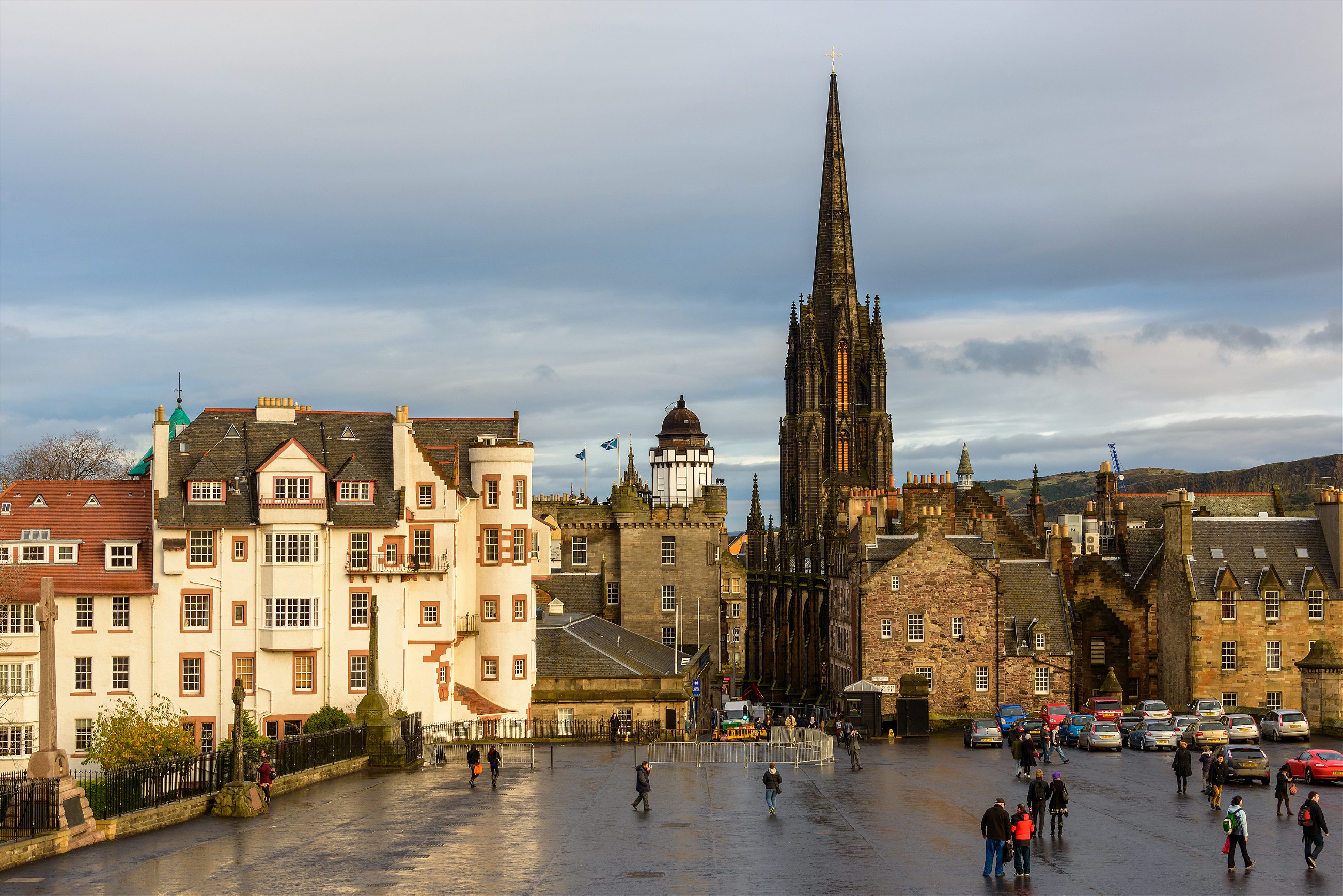
Walking downhill on Royal Mile, you’ll see the Scotch Whisky Heritage Centre on your right. Save the tour, tasting tutorial, and the bizarre fairground ride (in cars fashioned into plastic whisky barrels) for another time. But do go to the gift shop, which has almost every whisky you’ve ever heard of in handy miniature bottles.
Once you’ve stocked up on mini-whiskies, keep descending the Mile, and turn right at the Hub—that big church spire that is the headquarters for the Edinburgh International Festival—onto Upper Bow and past the Quaker Meeting House. Pause on the terrace for a photo of curving Victoria Street, then go down the steps.
Victoria Street was designed by architect Thomas Hamilton, one of many 19th-century improvements to the city, as an extra route out of the Grassmarket. This street is also the model for J.K. Rowling’s Diagon Alley—the cobbled shopping street for Hogwarts students—in the Harry Potter books. Rowling was also Potter- inspired by Robert Cresser’s legendary brooms and brushes store at no. 40 Victoria Street, but that shut down in 2004 after trading on the same site since 1873—and in a particularly cruel twist of irony has been replaced by… Diagon House, a Harry Potter-themed souvenir store.
If you’re peckish already, hit OINK, which opens at 11 a.m., for a pulled-pork sandwich—just a simple roll filled with good quality roast pork from a hog farm-reared in Berwickshire. (If you don’t eat pork or meat, stop in at the Le Barantine Boulangerie a few doors down instead.)
Towards the bottom of the street, you’ll see a large set of Groucho glasses marking the Aha Ha-Ha joke and costume store—which the local council initially rejected because they felt the comically large nose would ruin the ambience of the area.
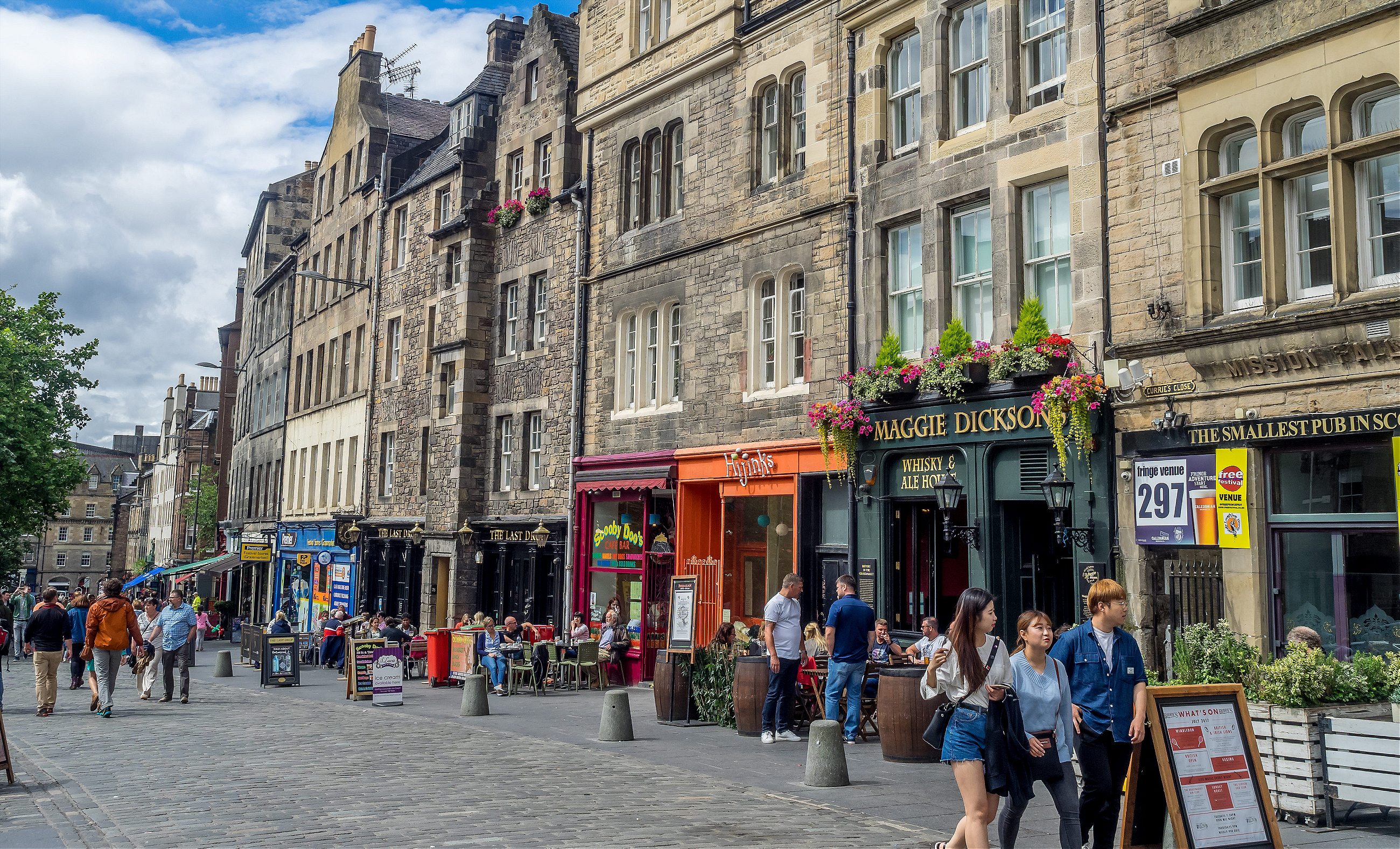
At the bottom of Victoria Street there is the Grassmarket. It’s probably busy, but bear with me—it’s beautiful and has some of the best views of the castle. Most likely laid out in the 14th century, it was used as a market square for cattle, timber, and corn until 1911. It was also where Edinburgh’s Italian immigrants first settled in the 1880s. But the Grassmarket is probably best known as the city’s former official spot for executions, where people were hung for a hundred years starting in about 1660. (Now, hordes of visitors and bachelor/ette parties and food carts traipse over the spot where the gallows once stood.)
The Last Drop Inn pub—named in honor of the last ever hanging in the Grassmarket—is said to be haunted by a girl in medieval clothing (naturally). Next door is the smallest pub in Scotland, which measures 14 x 17ft.
Walk along the market to the north end where you will see The White Hart Inn, said to be Edinburgh’s oldest pub (also, naturally, haunted).
Be sure to walk around to get some photos from the south side, including a nice shot of the castle’s rocky ramparts towering over the market. On the north side, on the ground near the bottom of Granny’s Green Steps, you’ll see the line of where the Flodden Wall once stood. The wall was built to protect the south side of the city after the 1513 Battle of Flodden, when the English routed the Scots in the largest battle ever fought between the two kingdoms. This is why Edinburgh’s steep and crowded Old Town looks like the way it does; everyone scrambled to live within the wall’s protection—and when there was nowhere else to build, they started to build underground.
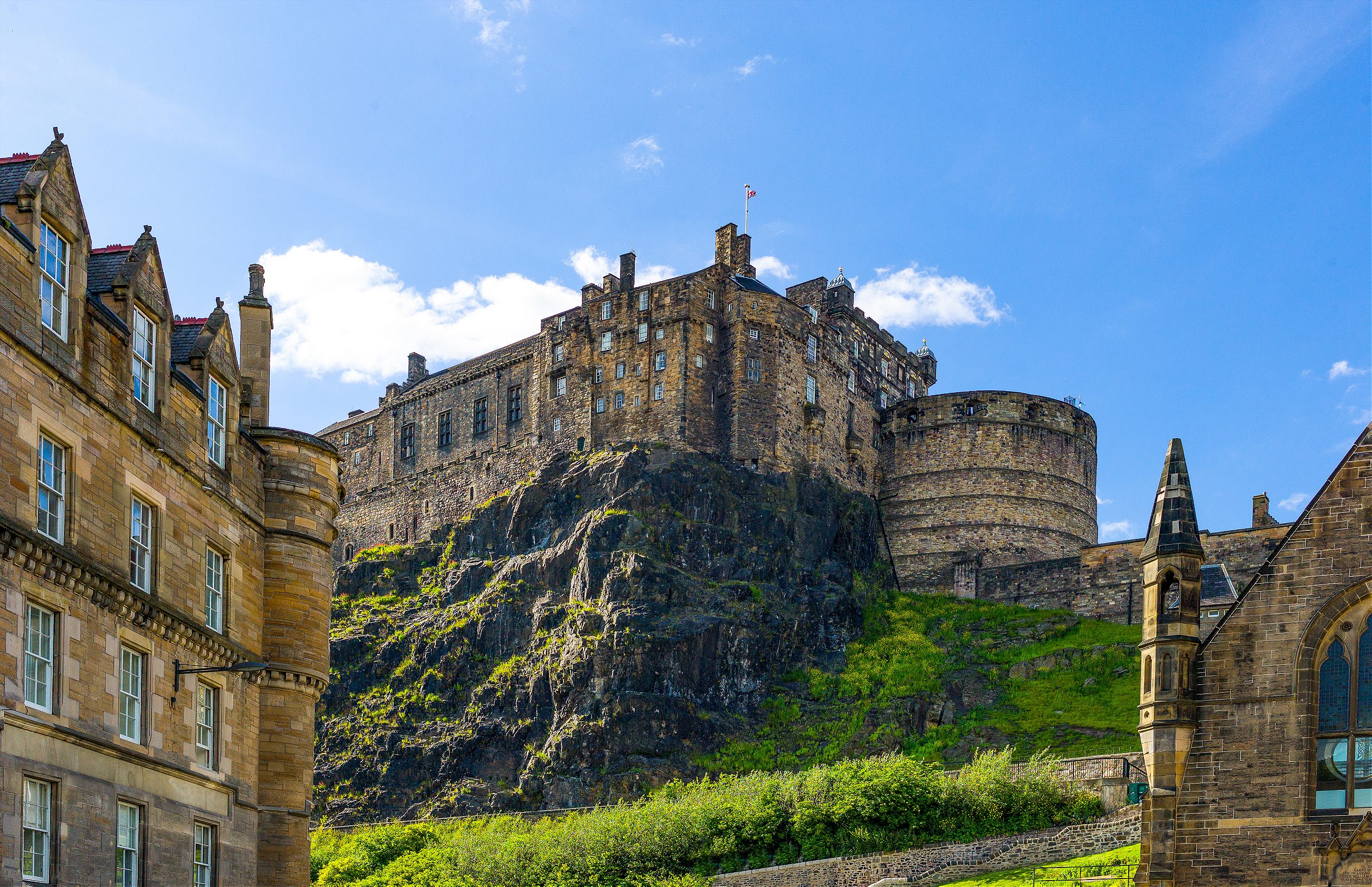
From the Grassmarket’s north end, walk along King Stables Road to Lothian Road and the West End. Take a right on King Stables Road onto the looping path through the cemetery next to St Cuthbert’s churchyard, which made a macabre but undeniable contribution to medical science. In the 19th century, Edinburgh was a leading center for the study of anatomy, but under Scots law only bodies condemned to death could be dissected, which let to a shortage of corpses. So-called resurrection men, or grave-robbers, had a lucrative hustle digging up bodies and selling them to the medical school. (Some, such as William Burke and William Hare, took matters into their own hands and didn’t even wait for people to die naturally.) The round watchtower was built in 1827 specifically to ward off bodysnatchers—but these days it’s an office for rent.
Walk onto Lothian Road. Where it meets Shandwick Place and Princes Street is known as the West End. This is a good place to stop for a drink. Choices: There is Brewdog on Lothian Road, which started out in Aberdeen and has grown into Scotland’s largest independent brewery. Across Shandwick place on Hope Street there is Angel’s Share, which plays up modern Scottish drinks and dishes, or duck down into Whigham’s Wine Cellar if you want something more atmospheric. Also on Shandwick place is the Edinburgh Gin Distillery, which has a bar where you can get a cheeky gin and tonic.
From the West End, walk town Queensferry Street on Drumsheugh Place, passing Lynedoch Place. Right off Lynedoch Place head down the steep, cobbled street, Bells Brae, and into the heart of Dean Village––a movie-set pretty World Heritage Site. This was the center of Scotland’s milling industry for 800 years before it stagnated, and was rebuilt by architect Thomas Telford in the 18th century. It’s a gorgeous fortress of buildings stacked, Escher-like, on the banks of the Water of Leith river, all Victorian mews, colorful Tudor houses, and deep-red brick courtyards.
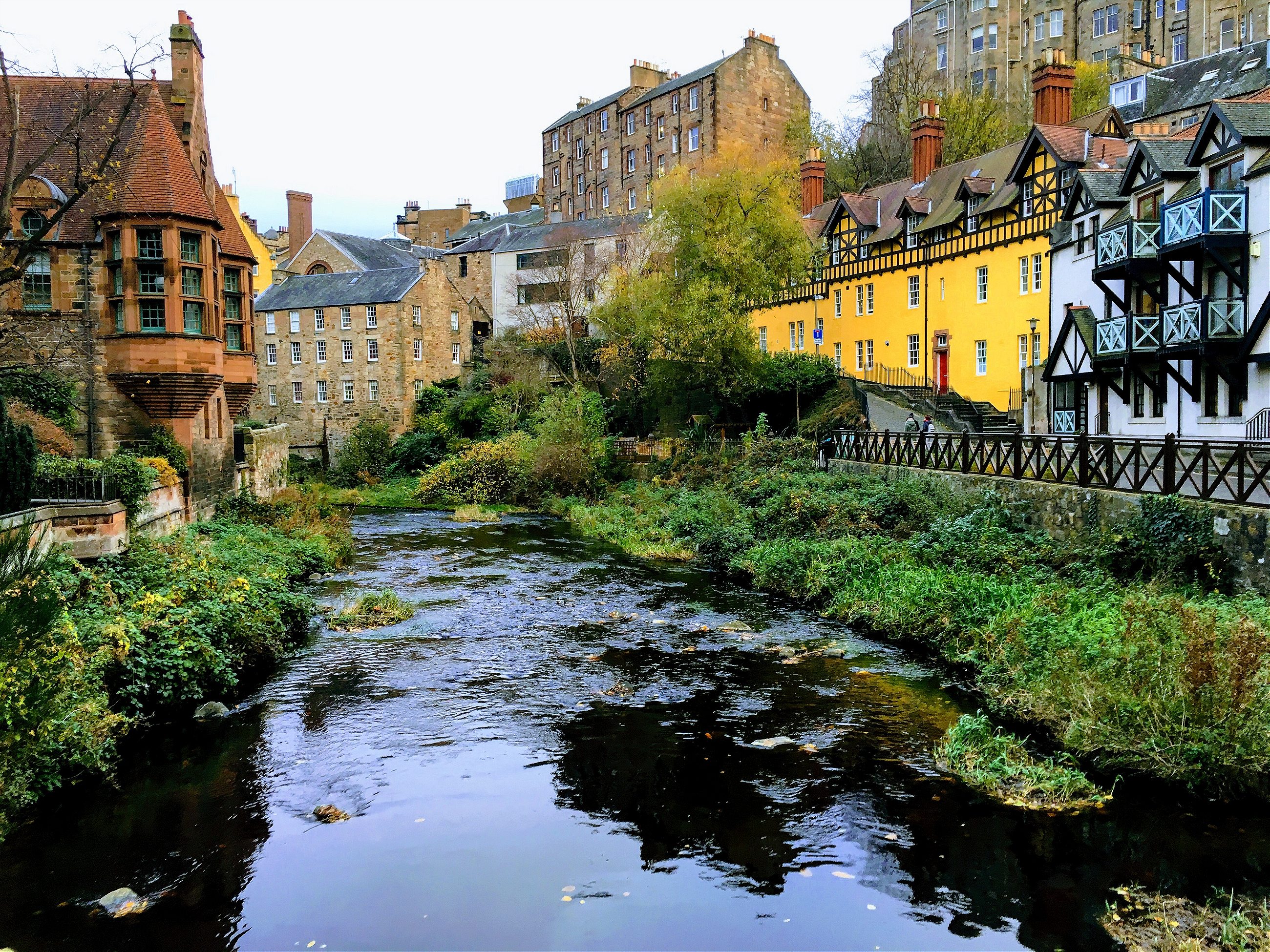
Head to Sunbury Street and to the Sunbury Footbridge, for the perfect shot over the water and the Tudor buildings. Find the Dean Path bridge and then walk down the footpath named Miller Row, following the Water of Leith walkway under a green forest canopy and passing under Dean Bridge. It’s a relaxing 10-minute stroll along the burbling water; an oasis of a shortcut.
Veer left past St Bernard’s Well and under the Park Stairs archway and follow Saunders Street into Stockbridge, a genteel but welcoming neighborhood with excellent bars and restaurants, and wander through the charity shops and second-hand stores stocked with stuff most antique stores would envy–including vinyl records, furniture, old maps, books, and art.
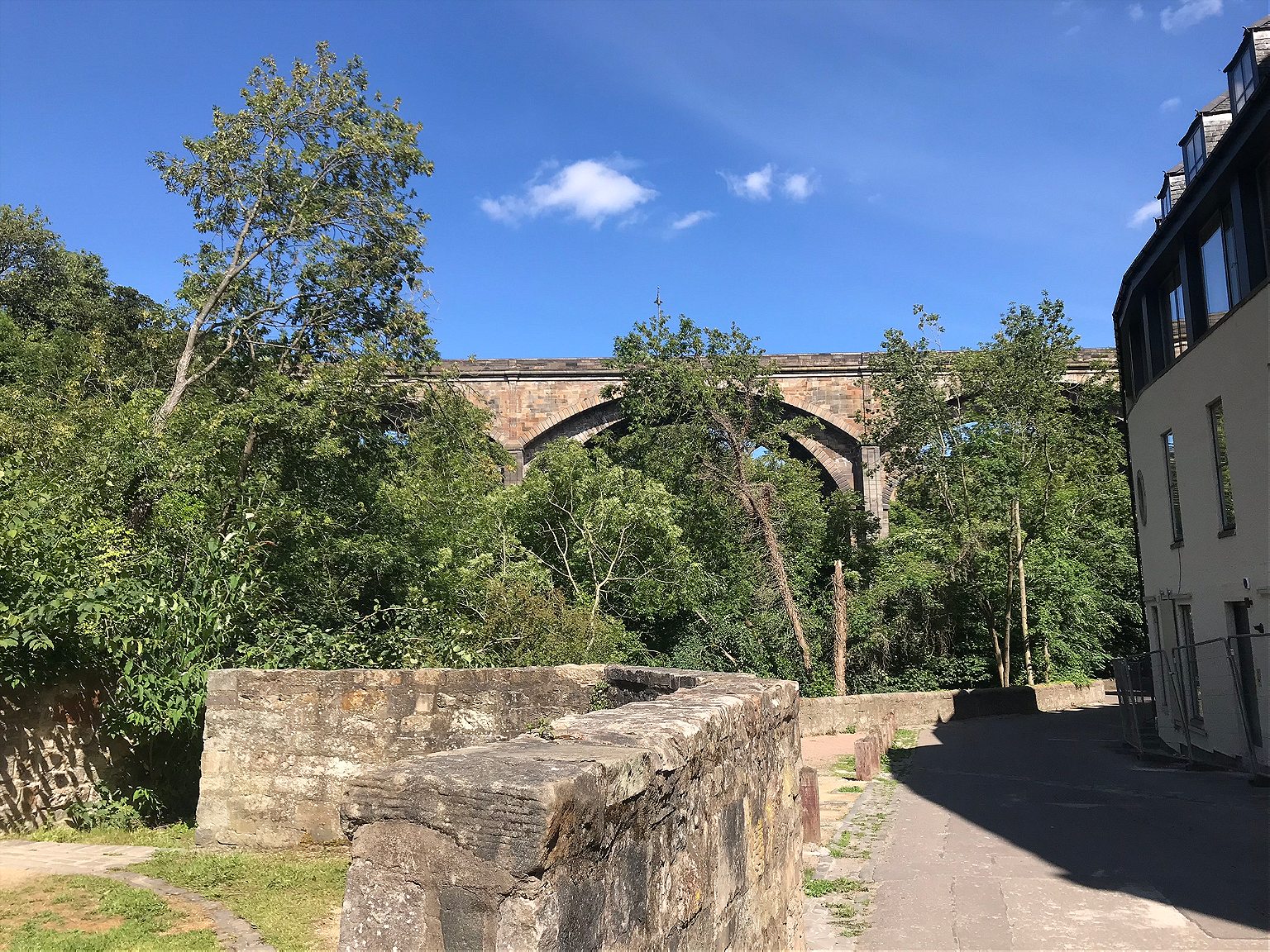
Walk around the corner to the cobbled street St Stephen’s Place and have a drink at one of bars carved into the Georgian houses’ basement level: the Baillie, the Antiquary Bar, or The Last Word Saloon. (Check out the toilet cubicles in there!) If you’re in the mood for wine, try Good Brothers’ Wine Bar, a bottle shop and wine bar with 20 wines by the glass.
Afterwards, follow St Stephen’s Place as it curves to the right, and then take a left onto Cumberland Street and walk east along it to get a feel for the look of the New Town. Stop at the Cumberland Bar for a drink. The pub is easily identified by the willow tree growing in its large but cozy beer garden.
From the Cumberland Bar, follow Drummond Street to London Street, and you will arrive at the bottom end of Broughton Street. Once, this was where witches and other suspected dark arts worshippers were held before execution. These days, it’s one of the city’s most vibrant areas, lined with bars, restaurants, independent shops, and a fish-and-chip shop with strobe lights and a DJ on late nights.
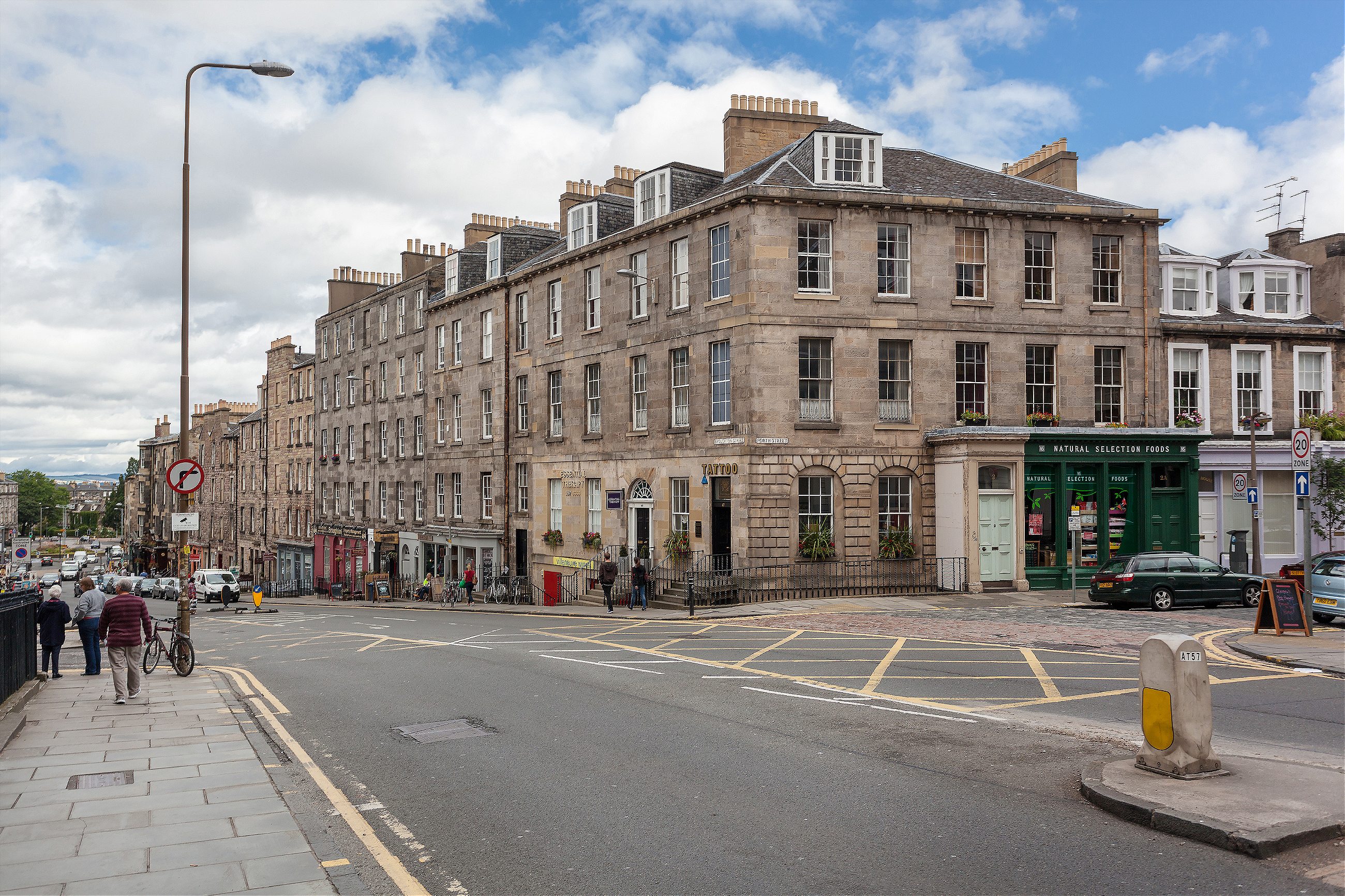
Broughton Street has many drinking and dinner options. Pickles is a locally beloved wine bar serving platters of charcuteries and cheese with many pickled things and pâtés such as wild boar or duck with red peppers and olives. Educated Flea specializes in Mediterranean-style dishes crafted from the Scottish “larder” (pantry, or ingredients). Or walk up Broughton Street and turn left at the foot of Leith Walk (where there is a statue of a foot) a few blocks down to Antigua Street and Khushi’s for a good old-fashioned curry.
If you’re still hungry, end your day/night at Caffe Piccante at the top of Broughton Street for fish and chips, a smoked sausage supper, or some deep fried haggis. Don’t forget the salt and Edinburgh’s special chip sauce.
Read more from our Edinburgh city guide:
[Read: Everything you need to know before you go to Edinburgh]